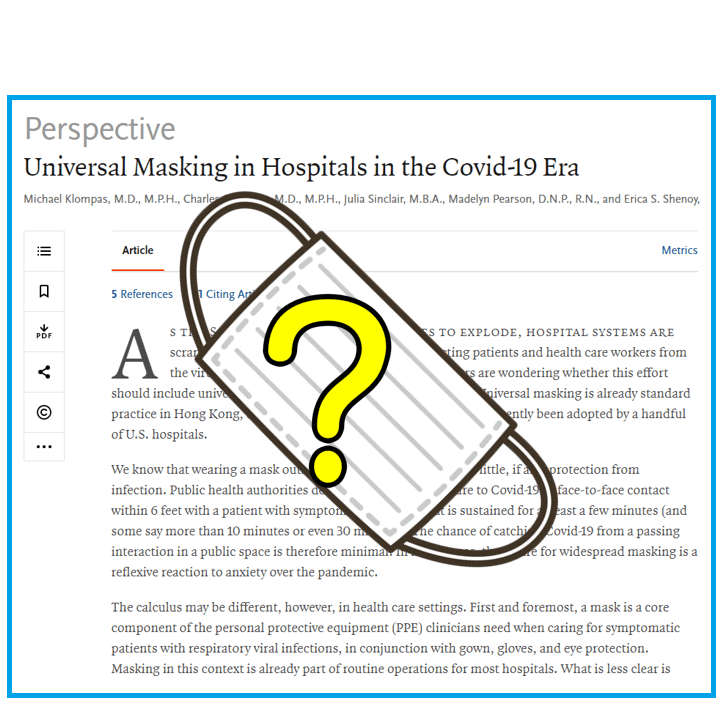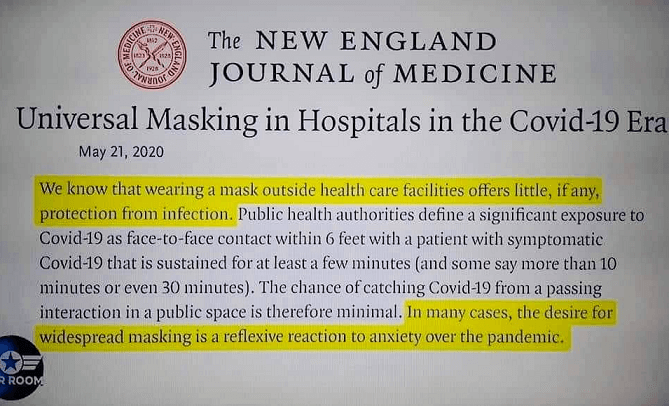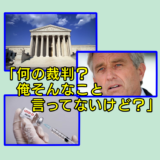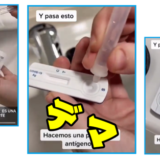デマの内容

マスクではほとんど感染を防ぐことができないという論文がある!
マスクは無意味! マスクを外せ!
と主張する人がいますが、デマです。
今回、デマッターが「マスクは無意味」の根拠として挙げた論文がこちらです。
Universal Masking in Hospitals in the Covid-19 Era | NEJM
新型コロナ時代の病院におけるユニバーサルマスキング(The New England Journal of Medicine)
解説
結論
デマです。
この論文の著者が、USA TODAYへの電子メールおよび論文へのフォローアップレターの中で、次のように述べています。
- SNSで拡散している「論文によるとマスクは効果がない」という話は、論文の文脈から不当に切り離されている。
- 論文の意図は、マスクの着用を減らすことではなく、推し進めることだった。
- 論文中の「マスクの感染防御の意味は小さい」という表現は、(1) 屋外で (2) 人と人との距離が保たれているときの (3) 短時間の接触について言及したものであり、閉鎖的な空間や長時間の接触には当てはまらない。
- お互いが6フィート(約1m83cm)以内にいる人達のマスク着用を強く支持している。
USA TODAYのファクトチェック
以下はUSA TODAYのファクトチェック記事からの抜粋です。
New England journal article taken out of context, didn’t bash face masks
文脈から切り取られて拡散されたニューイングランド誌の記事は、マスクを否定していませんThe authors of a medical journal article that questioned the use of masks outside health care settings say they support widespread mask wearing when people are in close quarters and that their words have been taken out of context.
医療現場の外におけるマスクの使用について疑問を呈した医学雑誌の論文の著者は、人々がお互い近距離にいるときについては広範なマスクの着用を支持しており、彼らの言葉が文脈から切り離されたと述べています。The May 21 issue of The New England Journal of Medicine included a “perspective” article titled “Universal Masking in Hospitals in the COVID-19 Era” that questioned the usefulness of mask wearing outside a hospital or other health care facility. The article was first published on the journal’s website on April 1.
The New England Journal of Medicineの(2020年)5月21日号に、「Universal Masking in Hospitals in the COVID-19 Era(新型コロナ時代の病院におけるユニバーサル・マスキング)」と題する論文が掲載されました。この論文は、病院など医療施設の外におけるマスク着用の有用性について疑問を投げかけました。この論文は、4月1日に同誌のウェブサイトに掲載されたものです。“We know that wearing a mask outside health care facilities offers little, if any, protection from infection. Public health authorities define a significant exposure to COVID-19 as face-to-face contact within 6 feet with a patient with symptomatic COVID-19 that is sustained for at least a few minutes (and some say more than 10 minutes or even 30 minutes). The chance of catching COVID-19 from a passing interaction in a public space is therefore minimal. In many cases, the desire for widespread masking is a reflexive reaction to anxiety over the pandemic,” the journal article states.
論文には次のように記載されています。「医療施設の外でマスクを着用しても、感染防御の意味は小さいことが分かっています。公衆衛生当局によると、新型コロナへの重大な曝露というのは、“症状のある新型コロナ患者と6フィート(約1m83cm)以内で対面し、少なくとも数分間(10分以上、あるいは30分という人もいる)その状態を維持すること” と定義されています。したがって、公共の場で他人とすれ違った程度では、新型コロナに感染する可能性はほとんどありません。多くの場合、広範なマスクの着用が望まれている理由は、パンデミックに対する不安が反映された結果である」ブログ主による注上記の「新型コロナへの重大な暴露の定義」は古い情報です。
2020年の前半、WHOは「無症状感染は非常に稀である」という誤った認識を持っていましたが、2020年の6月にその認識を訂正し、「世界的な感染の40%が無症候性の個人によるもの」という推計を出しました。
- 新型コロナ: 無症状からの感染、不明点多く 新型コロナでWHO: 日本経済新聞(2020/6/10)
- Dr. Anthony Fauci says WHO’s remark on asymptomatic coronavirus spread ‘was not correct’(CNBC)(2020/6/10)
問題の論文はWHOが認識を改める前に書かれたもので、2020年4月1日と5月21日に公開されました。
現在(2022年1月13日)、CDCの新型コロナに関する記事を確認すると、前述の定義「症状のある新型コロナ患者と(with a patient with symptomatic COVID-19)」から「症状のある(symptomatic )」という言葉が削除されています。
また、前述の定義「6フィート(約1m83cm)以内」は「6フィート以上(離れていても感染し得る)」と修正されています。
Transmission of SARS-CoV-2 from inhalation of virus in the air farther than six feet from an infectious source can occur
新型コロナウイルスの感染は、感染源から6フィート以上離れた空気中のウイルスを吸引することでも起こり得る
Scientific Brief: SARS-CoV-2 Transmission(科学的概要:新型コロナウイルスの感染)Many Facebook posts have shared a screenshot of that paragraph online, with the first and last sentences highlighted.
この段落の最初と最後の文章をハイライトしたスクリーンショットがFacebook上で拡散されました。Article’s authors say they intended to ‘push for more masking’
論文の著者は、「マスクの着用を推し進めることを意図していた」と述べていますIn a follow-up letter to the New England Journal of Medicine published online June 3 and in print July 9, three of the article’s authors, Drs. Michael Klompas, Charles Morris and Erica Shenoy, wrote some people were using their article “as support for discrediting widespread masking.”
この論文の著者であるマイケル・クロンパス、チャールズ・モリス、エリカ・シェノイの3人は、New England Journal of Medicine(6月3日のオンライン版、7月9日の印刷版)へのフォローアップレターの中で、「一部の人々が広範なマスク着用の意義を貶めるために我々の論文を利用している」と記しています。“We understand that some people are citing our perspective article as support for discrediting widespread masking. In truth, the intent of our article was to push for more masking, not less. It is apparent that many people with SARS-CoV-2 infection are asymptomatic or presymptomatic yet highly contagious and that these people account for a substantial fraction of all transmissions. Universal masking helps to prevent such people from spreading virus-laden secretions, whether they recognize that they are infected or not,” the three authors wrote in the letter.
「マスク着用の普及を否定する根拠として私たちの論文を引用する人達がいますが、実は、私たちの論文の意図は、マスクの着用を減らすことではなく、推し進めることでした。新型コロナウイルス感染者の多くは、無症状、または発症前でありながら高い感染力を持っており、そういった人々が全感染者のかなりの割合を占めていることは明らかです。 ユニバーサルマスクは、このような人々が、自分が感染していると認識しているかどうかにかかわらず、ウイルスを含んだ分泌物を拡散させないために役立ちます」と、3人の著者はレターに書いています。ブログ主による注ユニバーサルマスク(Universal Masking)とは、無症状の人を含めて全員がマスクをするという考え方です。
Klompas, an associate professor of infectious diseases at Harvard Medical School and associate hospital epidemiologist at Brigham and Women’s Hospital in Boston, wrote in an email to USA TODAY that the intention of the original article was to explain the decision to implement a universal mask wearing policy in his hospital system. At the time the original article was written, public health officials had not begun recommending universal mask use.
ハーバード大学医学部の感染症学准教授で、ボストンのブリガム&ウィメンズ病院の病院疫学准教授であるクロンパス氏は、USA TODAYへの電子メールで「論文の意図は、自分の病院のシステムでユニバーサルマスク着用ポリシーの実施を決定したことについて、説明することだった」と述べています。論文が書かれた当初、公衆衛生当局はまだユニバーサルマスクを推奨していませんでした。“The sentiments we expressed in favor of masking in this paper were ahead of common practice in most hospitals,” Klompas wrote. “The world has changed rapidly since then, and masking is now an accepted norm, both in and out of hospitals.”
「私たちがこの論文でマスクの着用を支持したことは、ほとんどの病院の常識を先取りしていました」とクロンパスは書いています。「その後、世界は急速に変化し、今ではマスク着用は病院の内外で常識となっています。Short, not long, interactions was the focus
長時間ではない、短時間の接触The phrase “little, if any, protection from infection” in the original article was intended to refer to brief encounters in public places, not prolonged interactions, the authors wrote.
原著論文にある「感染防御の意味は小さい」という表現は、公共の場での短時間の接触について言及したものであり、長時間の接触のことではない、と著者らは書いています。“As the rest of the paragraph makes clear, we intended this statement to apply to passing encounters in public spaces, not sustained interactions within closed environments,” they wrote. “A growing body of research shows that the risk of SARS-CoV-2 transmission is strongly correlated with the duration and intensity of contact: the risk of transmission among household members can be as high as 40%, whereas the risk of transmission from less intense and less sustained encounters is below 5%.”
「その段落の後半を読めば明らかですが、私たちは、閉鎖空間での持続的な接触のことを言っているのではなく、公共の場での一時的な接触について言及したのです」と彼らは書いています。「新型コロナウイルスの感染リスクは、接触の時間や濃密さと強い相関があることを示す研究結果が増えています。たとえば、家庭内での感染リスクは40%に達しますが、それほど濃密ではない短時間の接触による感染リスクは5%以下です。The authors went on to say that recent research has associated mask wearing with less transmission of the coronavirus, “particularly in closed settings.”
さらに、「最近の研究では、“特に閉鎖的な空間において” マスク着用がコロナウイルスの感染抑制に関係している」と論文の著者は述べています。“We therefore strongly support the calls of public health agencies for all people to wear masks when circumstances compel them to be within 6 ft of others for sustained periods,” the authors concluded.
「したがって、我々は、“お互いが6フィート(約1m83cm)以内に長時間いなければならない状況下では、すべての人達がマスクを着用すべき” という公衆衛生機関の呼びかけを強く支持します」と著者らは述べました。Klompas echoed that sentiment in his email, saying “we strongly support masking for people within six feet of one another.”
クロンパス氏は、メールでも、「我々は、お互いが6フィート(約1m83cm)以内にいる人達のマスク着用を強く支持します」と繰り返し述べました。“If you’re outside, it’s not crowded, and people are reliably more than six feet away at all times, then a mask probably doesn’t add much additional value. But if you’re indoors, in crowded space or in a situation where people may intermittently come within six feet, then masking is desirable,” Klompas said.
屋外にいるとき、混雑しておらず、お互いが常に6フィート以上離れているのであれば、マスクはおそらく大きな付加価値をもたらさないでしょう。しかし、屋内や混雑した場所、あるいはお互いが断続的に6フィート以内に近づくような状況であれば、マスクの装着が望ましいでしょう」とクロンパス氏は述べています。CDC recommends most people wear face coverings to prevent spread of COVID-19
CDCは新型コロナの感染拡大を防ぐために、ほとんどの人にマスクの着用を推奨していますThe U.S. Centers for Disease Control and Prevention recommends people 2 years old and older wear cloth face coverings in public settings and when around people who don’t live in the same household.
CDC(米国疾病対策予防センター)は、2歳以上の人が公共の場にいるとき、または同じ世帯に住んでいない人と一緒にいるときは、布製のマスクを着用することを推奨しています。ブログ主による注上のリンク先記事の情報は古いです。リンク先の記事内に、「現在は “COVID-19 home page”を参照するように」という注意書きがあります。
The face coverings help prevent respiratory droplets from spreading when someone sneezes, coughs, talks or speaks loudly, the CDC’s website states.
「マスクは、くしゃみ・咳・会話・大声などによって呼吸器系の飛沫が飛ぶのを防ぐのに役立ちます」とCDCのウェブサイトは述べています。The recommendation to mask up applies to the general public, including people without symptoms of COVID-19.
マスク着用の推奨は、新型コロナの症状がない人を含む一般市民にも適用されます。“COVID-19 can be spread by people who do not have symptoms and do not know that they are infected. That’s why it’s important for everyone to wear cloth face coverings in public settings and practice social distancing (staying at least 6 feet away from other people),” the CDC states on its website.
「新型コロナは、症状がなく自分が感染していることに気づいていない人からも感染する可能性があります。そのため、誰もが公共の場で布製のマスクを着用し、ソーシャル・ディスタンス(他人から少なくとも6フィート離れること)を実践することが重要です」とCDCはウェブサイトで述べています。People who know they have or think they might have the coronavirus should also wear face coverings, the CDC recommends.
新型コロナウイルスに感染していると分かっている人、あるいは感染している可能性がある人も、顔を覆うものを着用するようCDCは推奨しています。“The cloth face covering helps prevent a person who is sick from spreading the virus to others. It helps keep respiratory droplets contained and from reaching other people,” the CDC’s website states.
CDCのウェブサイトには、「布製のマスクは、病気の人が他の人にウイルスを広げないために役立ちます。マスクは呼吸器系の飛沫を抑え、他の人に届かないようにします」と書かれています。Our ruling: Partly false
結論:部分的に誤りthe posts lack context. The authors of the referenced article say that the quoted statement referred to brief encounters in public places rather than sustained contact in close quarters. The authors say they support public health agencies’ calls for all people to wear masks when they cannot keep 6 feet away from others for sustained periods of time.
投稿は文脈を欠いています。引用された論文の著者は、「引用された文章は、近距離での持続的な接触について述べたものではなく、公共の場での短時間の接触について言及したものだ」と述べています。論文の著者は、「公衆衛生機関が、“お互いに6フィート(約1m83cm)以上離れることができない場合、すべての人がマスクを着用するように” と呼びかけていることを支持する」と述べています。The Facebook post is misleading to the extent that it implies the journal article offers evidence against universal face mask policies. The authors of the journal article say they support such policies. Therefore, we rate this claim as PARTLY FALSE.
「ユニバーサルマスクの政策は誤りだという証拠をこの論文が示している」と示唆するフェイスブックの投稿は、誤解を招くものです。この論文の著者は、ユニバーサルマスクの政策を支持すると述べています。したがって、私たちはこの主張を「部分的に誤り」と評価します。Fact check: New England journal article taken out of context, didn’t bash face masks
 ほえのブログ
ほえのブログ 


